Disclosure: Please note that some links are affiliate links, and at no additional cost to you, we earn a commission if you make a purchase.
If you would like to support this website in some way, using these links will help do exactly that.
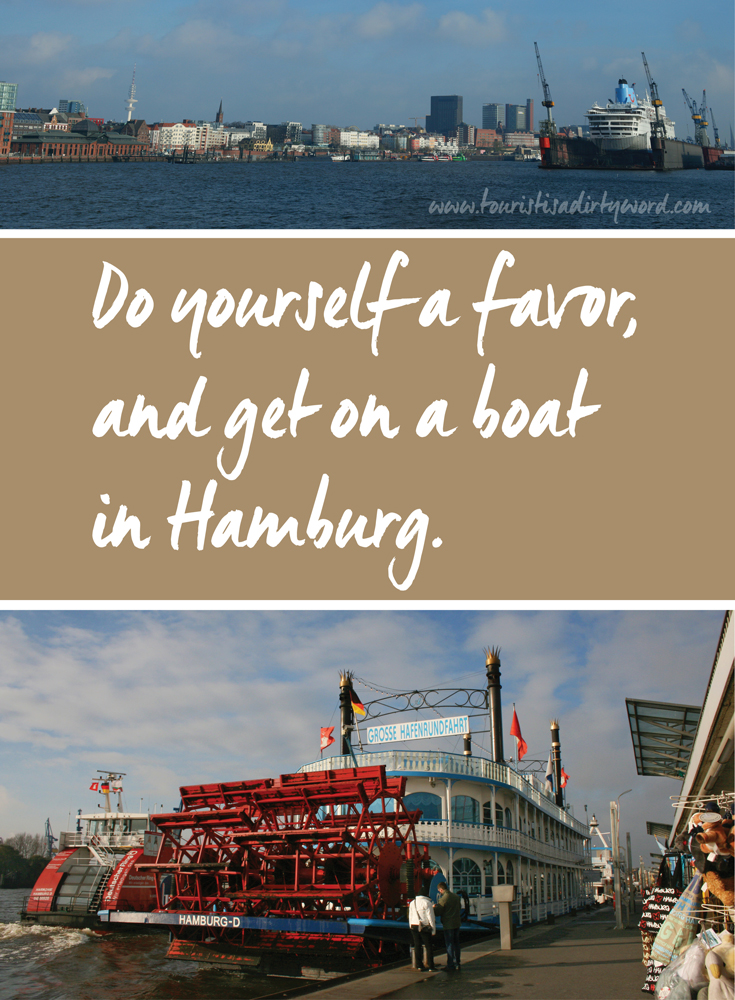
You don't read the ending of a book first.
You don't fast forward through a movie to the end.
If you did, the joy of discovery is replaced with discovered.
For that same reason, I avoid narrated city bus tours. They give away a city before you've had the joy to discover it. An hour or two later and you've zipped by all the top attractions, and get off with an empty feeling of what else is there?
To discover a new city, I like to walk, one step at a time, and slowly watch the city's character unfold.
However, narrated boat tours? That's a whole other beast! Unless you're an experienced sailor, taking a boat tour is the only way you're getting on a boat to see the city in a whole new watery light. Most major cities developed around bodies of water, especially rivers and seas. Hamburg is no different, and its connection to the North Sea through the Elbe River has been one of the most influential forces upon the history of Hamburg. Its the second busiest port in Europe, beaten only by the Port of Rotterdam.
Our Experience Cruising the Hamburg Riverfront
Here are my favorite scenes from our trip on the Louisiana Star. I especially liked that this boat had a comfy dining room with plenty of windows. It was November when we sailed. It was frigid outside, and I had no interest in being on deck! They offered a drink service, so we could enjoy a nice warm cup of coffee as the riverfront sailed by.
There's nothing better after a long day of exploring a city on foot, then climbing onto a boat to review the city by water. In Hamburg especially, you can't fully appreciate the scale of the ships until you're floating in the water beside them. The boat tour guide was exceedingly knowledgeable and filled us in on the gossip of the boats we were cruising past.
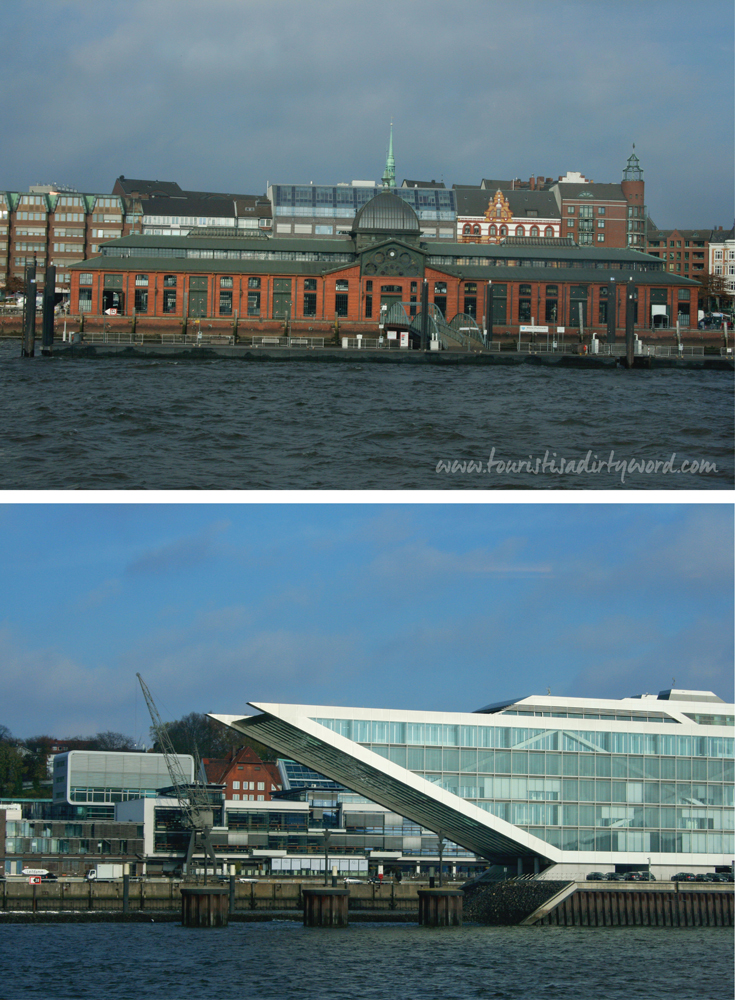
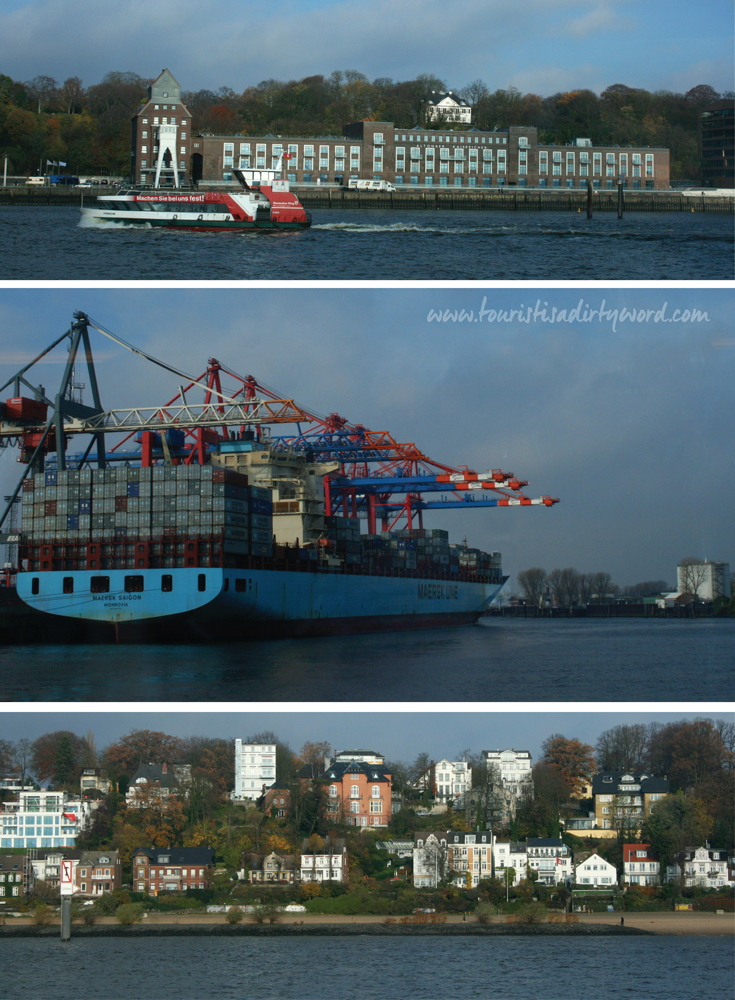
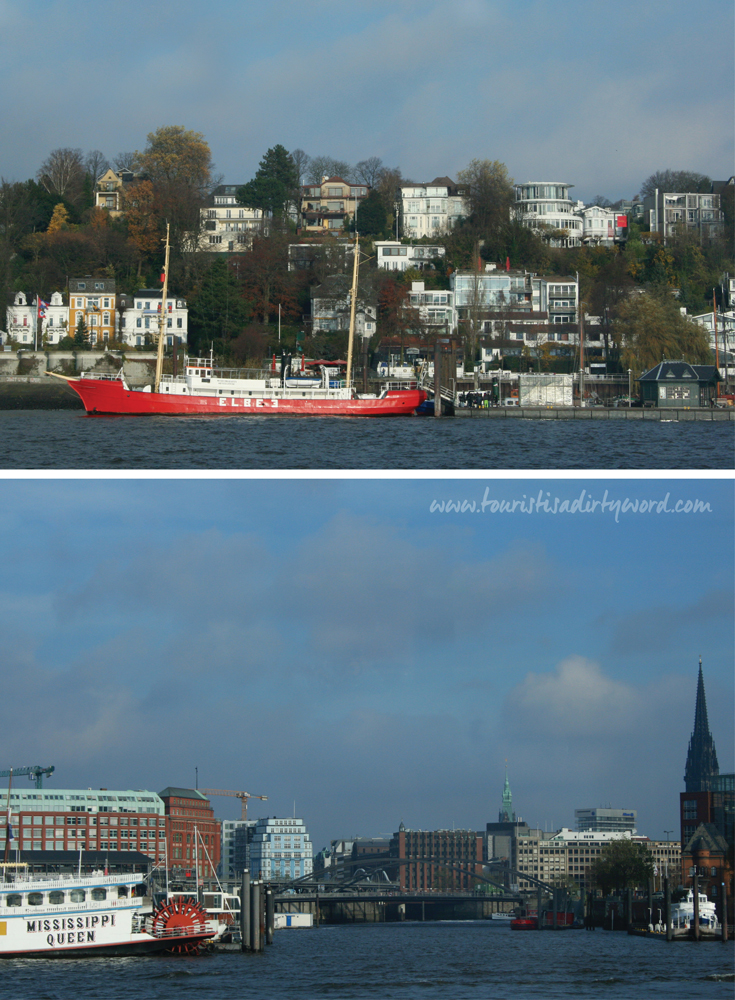
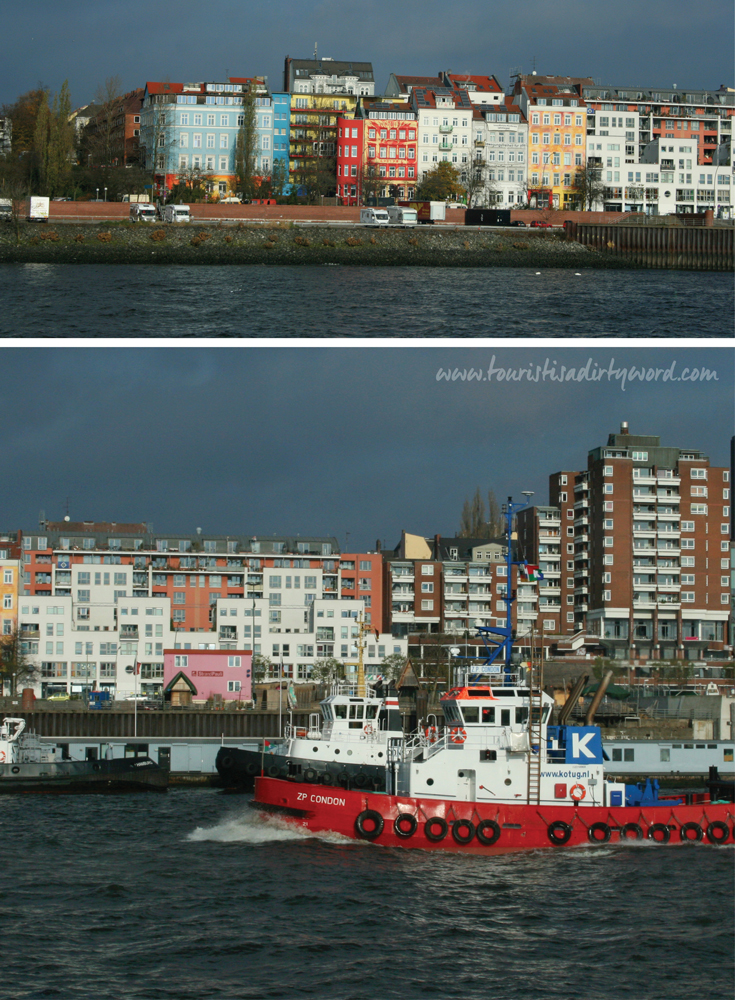
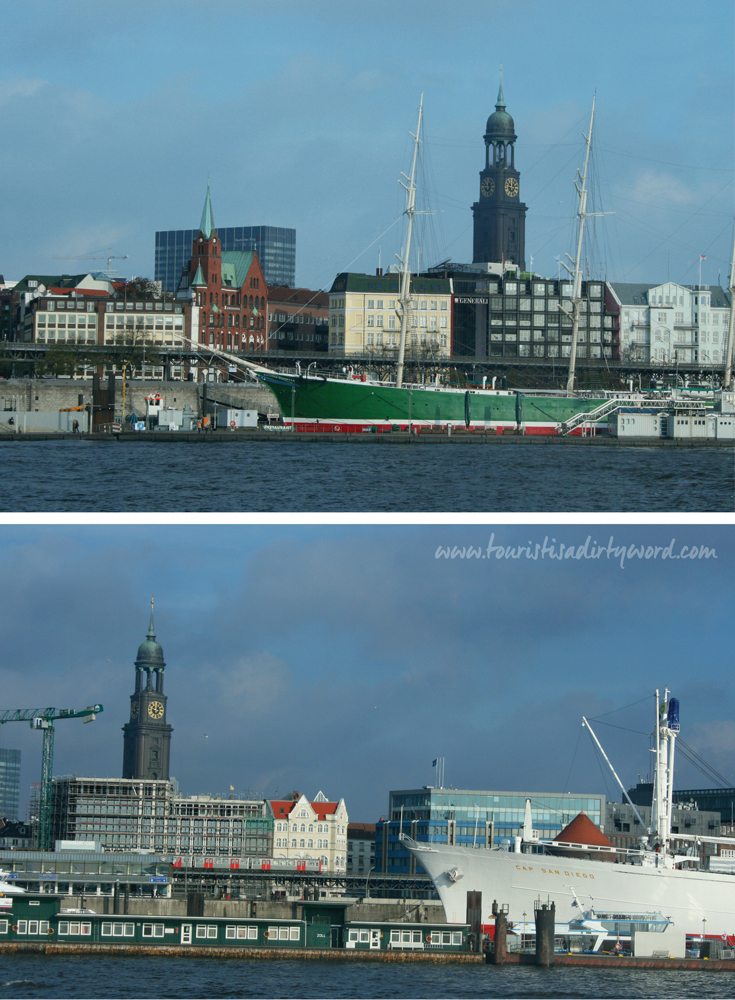
Follow Along
If you enjoyed this article, or these topics sound interesting to you, you'll love our weekly newsletter. You'll receive a free Germany Packing list for signing up, and you'll receive each week's newest posts every Friday. Thank you for reading!

The "City" Within the City of Hamburg
Hamburg had reached a historical breaking point in 1892 when a cholera epidemic caused the port to close. Bad business for the HAPAG, Hamburg-America Shipping Line, and a bad situation for the emigrants living in limbo waiting to board the ships for North America. Albert Ballin was the perfect man to implement a solution. Ballin’s family business, before his career at Hapag-Lloyd, had managed an emigration agency that helped emigrants buy tickets and transportation. He took what he knew and expanded the concept to include living for 14 days in what would ultimately be called BallinCity, BallinStadt.
When the emigrants arrived by train in Hamburg they immediately went to Ballin’s emigration dormitories where housing, food, healthcare, even various churches, were available and packaged in with the ticket to North America. This way any cholera or other disease outbreaks were isolated and only healthy passengers boarded the ship. It was incredibly successful, and there were 30 buildings in BallinStadt in it's height. In 1913, a record 192,733 emigrants passed through BallinStadt. WWII put an end to organized emigration, and the dormitory buildings were torn down. With three reconstructed and restored emigration dormitories on the historic site of the originals, each dedicated to telling parts of the emigrant story, the BallinStadt Museum opened in 2007. The museum was closed for a short time to expand the exhibition, and just reopened.
Quite simply, history comes alive at BallinStadt in Hamburg. This unique, innovative museum recreates, plays, sings, shows the story of emigration. The exhibits follow various individual stories as they go through the process of deciding to leave their homes, packing what they want and need, traveling to the port, living in BallinStadt, the ship voyage, and making it through immigration. With such props, staging, photos, you can’t help but feel what it must have been like to be an emigrant.
Genealogy Research
Although my ancestors left Germany before BallinStadt opened in 1900, it's likely they left through Hamburg or neighboring Bremen. Like many others, I went to BallinStadt in hopes of finding names on their lists. Make sure you bring your names, dates, and ancestry research you’ve done so you’re ready to go further. I wanted to find out who it was that left Germany for the United States and when they left, but unfortunately at the time of my visit the emigration records were still being digitized. Now they’re completely online, so if your family left from Hamburg, you should be golden. They have a computer lab devoted to researching, and staff are available to help you look.
Invaluable Experience and Opportunity
I wasn’t keen on signing up for an online genealogy membership, and with BallinStadt’s partnership with Ancestry.com you’re able to access the records available to paid subscription memberships with just your admission. I’ve seen some complaints online about the cost of the admission to BallinStadt, but would argue that this is not a publicly owned museum. If you’re visiting in hopes of researching your ancestry, compared to many monthly memberships, the ticket price is incredibly fair. The experience of the exhibition itself exceedingly justifies the cost of admission, but adding on-site access to the online records of ancestry.com without a subscription membership is fantastic.
Follow Along
If you enjoyed this article, or these topics sound interesting to you, you'll love our weekly newsletter. You'll receive a free Germany Packing list for signing up, and you'll receive each week's newest posts every Friday. Thank you for reading!

P.S. Read more about the man with the plan, Albert Ballin.
I always like museums that are interactive, where you can touch samples in the exhibit. But when the museum is a u-boat floating in the Hamburg harbor, which you can climb into AND you can touch things, not much holds me back. Although, someone should have warned me how tight it is in there. If you are frightened by cramped or small spaces, this is not the place for you. Walk over to Brücke 10, a local snack bar, to enjoy the view of the Elbe river and have a Fischbrötchen (bread roll with fresh fish).
The U-434 was originally a Soviet submarine with the pennant number B-515, built in 1976. It is almost 300 feet long and was in active service until 2001 before the submarine was sold to a private party and converted to a floating museum right by the Fischmarkt and Landungsbrücken in Hamburg.
A metal overpass leads you from the shore over to the top of the submarine onto a spiral staircase which leads into the torpedo room. It is right here where you begin to feel how cramped this space must have been, especially considering being locked in this room for up to 3 months. Right above the torpedoes are tight looking sleeping bunks and some small work spaces. In between are hundreds of pipes, cables and valves, several torpedo hulls are hanging all over the room. Our guide tells us that six of the torpedoes were always loaded and ready to go, another 24 were extra.
The only way into the next room is a round metal hole with about a three-feet diameter. You have to hold on to a metal hook on top of the hole in order to maneuver your body through it.
We are now in the officers' living quarters with a room that features a long dining table for 8-10 people. Since everything is so tight, the table doubles as an emergency operating table for wounded soldiers. The seats on the benches fold up onto the wall making space for the two onboard doctors to move around.
The room next door gives you a glimpse into the living quarters of the two doctors. A small sink, built in wardrobe and one bed. One bed for two people? The submarine was designed to have one bed for every two crew members. While one person was awake and working, the other one person could sleep, then they would switch. Or, to put it into the words of our guide, “The beds never got cold”.
The crew members could be maximum 5’4” tall and weigh 110 pounds or less. This guaranteed that the crew could move fast through the tight connectors and staircases in case of an attack. The total crew size for this Soviet submarine was 84, mainly used for espionage and hunting purposes.
The crew had to share only 2 bathrooms with a toilet and a shower in each, which means you better plan ahead to get ready before your shift starts. Each crew member was permitted to shower once a week in order to save resources, since the water used for the shower and toilets was put through an onboard desalting plant first. There is a separate tank on the submarine with potable drinking water, which was only used for drinking and cooking.
More round metal hole passages and a ladder lead you into the command center on the upper floor with countless gauges, cables and more valves.
Many of the metal cabinets around us are empty, they all contained classified electronic instruments in them, which were removed before selling the submarine. You can also sit in the original pilot chair while listening to sonar pings on hidden speakers, which makes the whole visit feel even more real.
We climb back down the ladder and pass the food storage room with enough food to last for up to 3 months and a document storage room. This room housed all the important and secret paperwork, guarded by 2 officers. One would sleep inside the document storage room on a bunk, the other one would guard the door from the outside.
A metal staircase leads up to several more crew quarters, passing the kitchen (or galley). Three cooks worked 12 hours shifts in a room not bigger than the inside of a modern day food truck.
One level lower is a long engine room, packed with three diesel engines and three electric motors. The diesel engines charged the electric motors, which in turn made for the almost silent movement of the submarine. In between are more beds for the crew to sleep close to their work-space.
I also spot a red telephone. Actually the third red telephone already, so I ask the guide if they are all connected. The explanation is simple: all black telephones are for internal communication on the submarine, all the red telephones are a direct hotline to the Kremlin in Moscow via satellite connection. I would love to know who answered a call like that, but I will never find out.
One last interesting fact as we walked towards the spiral staircase by the exit: The bottom third of the submarine was originally used as storage, but has been intentionally flooded with water since the conversion to a museum. There was nothing important to see down below and the extra water weight keeps the submarine stable, even on windy days.
But even if it is not very windy when you go to visit the U-434, please watch your head and your step. There is only minimal lighting and some very tight spaces you have to go through, but it is absolutely worth it. Be sure to get a guided tour, otherwise you will not be able to see the command center. The guided tour took us about 45 minutes and answered all our questions.
Photo Credits
I lost my personal photos from the tour to the digital black abyss. Back up your files! Always! I hope you enjoyed what I found and included from various excellent flickr photographers. All images are linked to their original post on flickr. They're being shared under creative commons license 2.0 generic. Thank you to these Flickr users/photographers: @avanotterloo | @woozie2010 | @flightlog | @tomislav medak | @quinet | @diversey
Follow Along
If you enjoyed this article, or these topics sound interesting to you, you'll love our weekly newsletter. You'll receive a free Germany Packing list for signing up, and you'll receive each week's newest posts every Friday. Thank you for reading!

